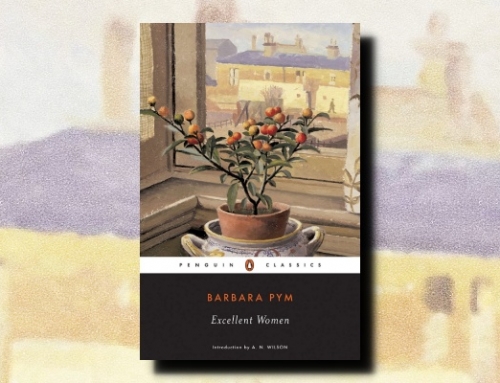
Echoland
by Per Petterson (1989, Ekkoland)
translated from the Norwegian by Don Bartlett (2016)
Harvill Secker (2016)
144 pp

No one could hurt him, no one could reach him, he could go wherever he wanted.
Three stars for this early coming-of-age novel, but five for the author’s oeuvre, and my review will focus as much on Echoland in the context of the wider work as it does on it as a standalone piece.
Per Petterson is one of my absolute favorite authors and this is his 8th book to be translated into English, all of which I have read. However, it was his first novel and second book after the story collection Ashes in My Mouth, Sand in My Shoes to be written in the original Norwegian, and as with that book it is an early work not as stylistically developed as his later masterpieces from To Siberia on, notably the Independent Foreign Fiction Prize- and Impac- winning Out Stealing Horses.
For my own benefit, as much as anything, his fiction is as follows, with the dates of English translations following:
- 1987: Aske i munnen, sand i skoa (short stories), translated as Ashes in My Mouth, Sand in My Shoes (2011) by Don Bartlett
- 1989: Ekkoland, translated as Echoland (2016) by Don Bartlett
- 1992: Det er greit for meg, translated as It’s Fine By Me (2011) by Don Bartlett
- 1996: Til Sibir, translated as To Siberia (1998) by Anne Born
- 2002: I kjølvannet, translated as In the Wake (2002) by Anne Born
- 2003: Ut og stjæle heste, translated as Out Stealing Horses (2005) by Anne Born
- 2008: Jeg forbanner tidens elv, translated as I Curse the River of Time (2010) by Charlotte Barslund
- 2012: Jeg nekter, translated as I Refuse (2014) by Don Bartlett
The 2004 non-fiction Månen over Porten (which could be rendered The Moon over the Gate), is as yet untranslated into English, but contains Petterson’s observations about reading and writing novels, where he discusses his favorite authors, such as Simone De Beauvoir (reading, aged 17, her Memoirs of a Dutiful Daughter was a key moment for him), Ernest Hemingway, Louis-Ferdinand Céline, Karen Blixen, Kjell Askildsen, Grace Paley, John Fante, Raymond Carver, Ola Bauer, Aksel Sandemose, and Paul Bowles.
One recurring character in Petterson’s work is ‘Arvid Jansen’:
He’s not my alter ego, he’s my stunt man. Things happen to him that could have happened to me, but didn’t. He has my mentality.
(Source: The Guardian)
An Arvid character features, albeit not always with an identical history, as a six-year-old in Ashes in My Mouth, Sand in My Shoes, turning twelve years old in this novel, aged approximately thirteen in It’s Fine By Me (although the story is told from the perspective of Arvid’s friend), aged 37 but looking back to his late teens in I Curse the River of Time, and aged 43 in In The Wake. (He is absent from To Siberia, albeit this is based on Petterson’s mother who has a similar background to Arvid’s, Out Stealing Horses, and I Refuse).
Echoland was written in October 1989. Reading it in April 1990 his mother told him, “Well, I hope the next one won’t be that childish,” which were the last words she spoke to him, as a week later she, and Petterson’s father, brother, and nephew all died in the Scandinavian Star ferry disaster, while travelling from Oslo to Frederikshavn in Jutland, Denmark, his mother’s family hometown. In In The Wake, Arvid suffers a similar tragedy.
Echoland also opens and closes with a, less tragic, family ferry journey from Oslo, where Arvid’s family live, to Jutland, where they visit his maternal grandparents each summer.
The title is taken from a poem Poul la Cour (a Danish wind turbine pioneer):
Aa Ekkoland hvor Luften
har gemte Spor, har Svar,
rughvide Land, min Barndoms hvasse Sted
svimmelt af Luft og JordOh Echoland, where the air
has hidden traces, has answers,
rye-white land, my childhood’s happy abode
giddy with earth and air
Arvid’s mother’s line is descended from Bruno, a Neopolitan engineer, who worked his way North across Europe, ending up in Denmark where he helped build, the Limfjordsbroen railway pontoon bridge from Alborg to Limfjordsbroen in the late 1860s, then marrying a local girl. And his legacy lives on in Arvid’s look and temperament:
In each generation after him there was one Italian, and when Arvid thought about him he saw an open, tanned face with dark curls above it, and that’s how Arvid himself looked, and what he didn’t know about Bruno, he made up.
And he thought, you don’t have to be Norwegian, you can be something else, somewhere else other than Oslo. You can be an Italian in Denmark. You can leave your own skin and be whoever you like and no one can get near you.
This is largely a coming-of-age novel, but family tensions and secrets are hinted at in the tension between Arvid’s mother and grandmother, some suggestions of an illegitimate pregnancy in his mother’s youth (perhaps Arvid or his fourteen-year-old sister Gry being the result) as well as the tragedy of the ‘Italian’ in the previous generation, his uncle Jasper, adored by Arvid’s mother, but who died (“at the same age as Jesus,” his mother points out) in a boating accident. There are certainly the hidden traces of the poem in the air, but few answers.
And for Arvid himself, he makes friends with Mogens, eighteen months older, in a Tom Sawyer/Huck Finn type of relationship, but Mogens actually seems more interested in Gry, who is suddenly, this summer, turning into a young woman. (“Her hair was a yellow flag, her shorts were green and her long legs brown with light-coloured down. She was his sister Gry and yet so unfamiliar, he didn’t know her.”) Arvid himself has two awkward encounters with a young woman who he first spies on petting with her boyfriend, and who later returns on her own and flirts with him.
The same Mogens reappears in I Curse The River of Time — written nineteen years later and with the characters twenty-five years older — when Arvid meets him, but initially fails to recognise him, on the ubiquitous ferry crossing from Oslo to Jutland, seeing him only as:
a man there I did not like. I did not like his face when he looked at me. It was as if he knew something about my person that I was not aware of, which for him was clear as day, as if I were standing there naked, with no control over what he saw, nor could I see in his eyes what he saw in mine.
Arvid also loses himself in a world inspired by the books he reads: Klit-Per, Pelle the Conqueror, and Terje Vigen from Nordic literature and Huckleberry Finn and 20,000 Leagues Under the Sea more widely. When he points out to Mogens the spot where Terje Vigen landed, he gets a blank look, and while his father has an extensive library, his actual reading is much less extensive:
But he and Arvid had looked over the bookcase and knew they couldn’t talk about what was there, the conversation would be over before it started, and he had to travel alone.
He did travel alone and he went wherever he wanted: he skied across Greenland, sailed on the GJOA through the North-west Passage, stood two years before the mast in the storms around Cape Horn, saw the English pounding away at the fortifications around Sevastopol with bullets whizzing round their heads and the young count who was not yet famous shouted: Get under cover, you young fool! He lay in the grass on the banks of the Mississippi and saw Huck Finn get on board the raft with the fish they were going to fry on the fire, and with Martin Eden he walked into the bourgeois houses of San Francisco afraid his broad shoulders would knock over all the porcelain over when he turned round, and he didn’t even know how to eat with a knife and fork like they did but decided he would learn everything that they knew and more. And he rowed with Terje Vigen from Norway to Denmark because his wife and children were starving and he made land right here, with aching hands and fingers that couldn’t be straightened after all those freezing hours grasping the oars. He must have been exhausted, and his back stiff as a board, but pleased too as he rowed back with what he came for. And then he strayed into the English blockade and everything was lost.
‘Who was he then?’
‘Who?’
‘Terje Vigen!’
‘Forget it’ Arvid said.
Overall, an early work and not as sophisticated as his later brilliant novels. Best read, as it has been translated, after the later works to add to the picture of Arvid Jansen’s life and Per Petterson’s development as a novelist.








Excellent review and commentary. I too am a huge fan of Petterson and have read most of his work but not this one. I do have it though, and although it is an early work it is always interesting to see where an author started.
It is definitely an early work – but yes for a Petterson fan well worth reading
I’m a bit surprised that, from what I can see, as of yet no U.S. publisher has published the book! I know publishers have to be mindful of the bottom line, and perhaps Petterson’s early work just didn’t seem like it would make any money, but I love it when publishers publish anyway.
Over here his IFFP and Impac double have made him high profile (as far as translated literary fiction goes) – plus Scandi fiction sells well anyway, so he’s actually published by a large commercial publisher. Is his profile so high in the US.
I suppose it isn’t, but I thought it was at least high enough someone would pick this up. Out Stealing Horses was on a number of year-end lists. Most have been published by Graywolf with some reprints going to Picador. Perhaps this one will still come sooner or later because I can’t see Graywolf ditching it. I may be overlooking it, but I don’t see anything on this one coming to the U.S.